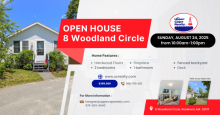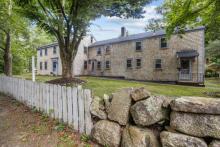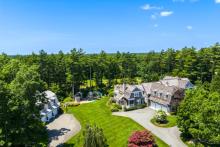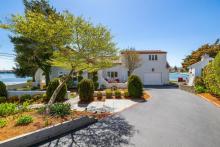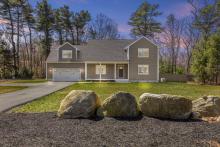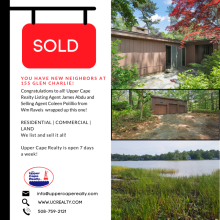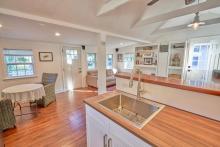Cell phone tower proposed on Zecco Marine property on Warr Ave
A 100-foot cell phone tower could be erected on the Zecco Marine property at 2 Warr Avenue in the near future.
On Thursday evening, Brandon Faneuf of Ecosystem Solutions, Inc. and Scott Adams of AEG Advanced Engineering Group were at a meeting of the Wareham Conservation Commission on behalf of AT&T, who have proposed the plans to construct the tower.
Initial plans have already been approved by Wareham’s Zoning Board of Appeals, but because of the proximity to wetlands, the coastline, and flood zones, the project still needs to be approved by the Conservation Commission.
Conservation Agent David Pichette said that plans for the proposed site looked up to par aside from a few minor changes that must be made prior to approval.
Pichette said the proposed square footage on the plans were not accurate, and that he’d like to see what work was to take place inside the “coastal bank” more accurately depicted.
“I don’t necessarily have a problem with the project,” he said, noting that he had just recently received a revised copy of the initial plans for the site. “I would like to have additional time to review that in detail.”
Adams said that although AT&T was responsible for the project, there would be a total of five cell phone carriers whose antennas would be housed internally toward the top of the tower, which he described as a “unipole” design. The proposed 15x15 foot pad the pole would be constructed on would be at the back of the boat storage area on the rear end of the property. He said the pole would be about 32 inches in diameter at the top, and about five feet in diameter at the bottom, gradually increasing from top to bottom. An access road would also be put in on the property leading up the the site.
Adams said that typically, cell phone towers only need to be accessed once a month for maintenance checks.
“Typically, it’s once a month, unless there’s a problem,” he said.
Members of the Commission showed concern as to the potential for ospreys to nest atop the tower, but Adams assured that it would be an extremely difficult place to build a nest as compared to some other tower designs.
“It’s very rare to see osprey nest on top of these unipole sites,” he said. “There’s no place for them to attach to. While the could place stuff on top, it would be tough to keep it there.”
Adams and Faneuf said they had already conducted “balloon tests” and “crane tests” on site, and though some abutters had questions regarding the tower at previous hearings at the Zoning Board, no abutters were present at Thursday’s Conservation Commission hearing.
The hearing was continued to the commission’s next meeting on February 18.




